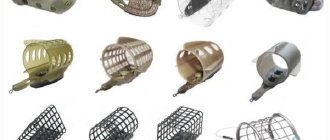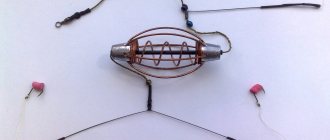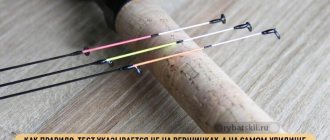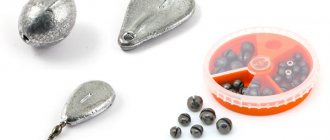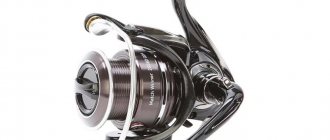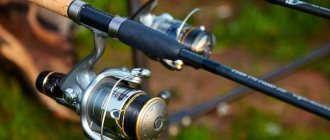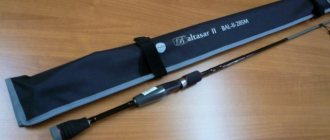Feeder fishing has been at the peak of popularity in recent years. At first glance, this method of fishing for peaceful fish is simple. To master it, you just need to acquire everything you need, observe more experienced colleagues and take the first step. That is, the first cast of the tackle. If you manage to catch something, then the angler is moving in the right direction.
But this only seems so to beginners. In reality, fishing with a feeder is a complex, labor-intensive process with its many subtleties and tricks. Success in such fishing depends on many factors: the choice of fishing location, the sensitivity of the rod, the composition of the bait mixture, and so on. The feeder also plays an important role. Today's variety of feeders can confuse even an experienced feeder. Sometimes quite unusual products appear on the shelves of fishing stores. Intuition and experience suggest that this is a feeder, but a number of questions arise. How to use it? What conditions is it intended for? And what kind of fish can you catch with it? But only a couple of months pass, and now it’s already in your arsenal, doing its job perfectly.
In fact, all feeder feeders perform the same function - they deliver an attractive mixture to the fishing point. But at the same time, they are all different and designed for specific purposes and conditions. The choice will depend on this.
What should you consider when choosing?
The arsenal of every feeder is constantly replenished with feeders, since during the fishing process they have to be changed or a new one installed due to annoying shooting. The same tackle cannot be equally effective in currents and in still water, in calm weather and gusty winds, on silty bottoms and hard ground.
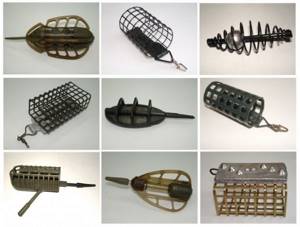
The choice of feeder for the feeder also depends on the consistency of the mixture, which can be crumbly, dense, sticky, with varying degrees of moisture. There is a lot to consider when choosing. First of all this:
- features of the reservoir and the conditions in which you will be fishing;
- distance from the shore to the fishing point;
- physical characteristics of bait;
- type of feeder equipment;
- type of fish;
- weather.
In the bag of any feeder, be it a professional or a beginner, there should be at least several options for feeders of different shapes and weights, otherwise he will not be prepared for fishing. For example, on a fast river there is nothing to do with one 50-gram product that will be carried away by a powerful water flow. You don't even have to unwind.
Some fishermen abandon factory models and fish exclusively with homemade ones.
A feeder made by yourself is not only about saving money. The angler does what he thinks will work best. And I must say, in some cases, homemade products demonstrate incredible effectiveness.
The principle of operation of the gear
Fishing with a ring was invented in Florence, which is why this method of fishing is also called “Florentine”. They catch it during the period of active feeding of fish after they have spawned. As the water in the river gets colder, the use of “ringing” loses its relevance as the fish become less active.
The gear is mainly used for catching bream, white bream, sop, and silver bream. Sometimes a carp can get caught on it.
Before preparing the equipment, you need to understand the operating principle of the Florentine:
- Having chosen a place on the river where bream is found, you need to swim up to it in a boat and stand on one anchor or on a stretcher. The boat must be across the current.
- A feeder is lowered from the downstream side.
- The weight ring is put on the cord.
- The main fishing line is threaded through a small ring, then the stop beads and a swivel or winding ring for attaching the garland are fixed.
- The garland is tied together with leashes on which hooks are fixed.
- The garland sinks into the water, which happens easily under the weight of the sinker when releasing it from the reel.
- The feeder is pulled up, as a result of which the food is released from it and a muddy trail of bait is formed around it, in which the leashes with bait are located.
In this design, with the help of a ring-feeder-garland, the hooks are always in the bait trail. Now all that remains is to wait for the bite.
Design features of the feeder feeder
Feeder feeders differ in weight, size, shape and feed capacity. Each fisherman himself chooses which model to fish with: light, heavy, streamlined or bulky. A standard feeder includes the following elements:
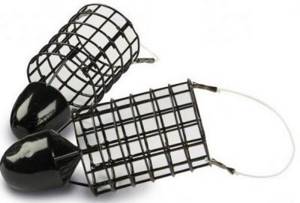
frame;- sinker (flat, bullet-shaped, etc.);
- eyelet, ring or swivel for mounting on equipment.
Manufacturers use different materials to make the case. It can be plastic, metal or made of nylon mesh. By the way, the latter is rare today due to its catchiness. The sinker is most often a plate made of a heavy alloy or lead. Some metal feeders designed for fishing in still water are heavy enough on their own for long casting, so they do not require additional weight. An example is the so-called spring, which is used to catch carp in carp ponds.
How to catch bream with a ring?
Having chosen a hole, you need to stop 15–20 meters above it . A “nod” is installed on board the fixed boat and the tackle is prepared. You must remember to bait the hook with a tasty bait. The worms are planted in a bunch. They should also cover the forend.
After all the equipment has been assembled and lowered into the water, all that remains is to wait for the bite. Some fishermen lure prey by tapping a ring on the feeder. This technique can be considered catchy if you fish in the same place for several days. During this time, the fish develops a reflex to the sound, because tapping promises tasty feeding. However, bream is very careful and an extraneous sound can scare it. If the bite begins to weaken, then you should stir the bait so that food begins to flow from it again.
You can hook bream confidently , without fear of failure. His lips are dense, so it will not be possible to tear them.
Catching bream with a ring is not only productive, but also exciting. Small fish will come first for bait, and only after some time more substantial prey in the form of large bream and large bream. The catch may include ide, burls, roach, and silver bream.
Classification of feeders
Depending on the task performed, there are two main types of feeders:
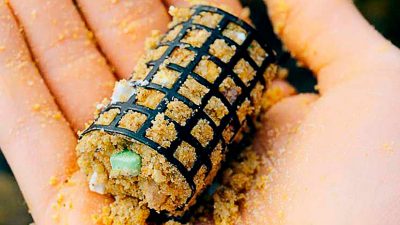
for feeding the point;- for fishing.
With the help of a feeder, at the first stage of fishing, the starting feeding is carried out, then a regular feeder comes into play. It is smaller in size, but at the same time somewhat heavier than the feeding one.
The volumetric feeder for starting feeding ensures the delivery of a large amount of feed to the fishing site. Since the bait itself creates enough weight for casting, such models usually have a slight load. They come in plastic and metal. Thanks to the special design, the feeding troughs are quickly emptied of the mixture and float up easily; it only takes a few minutes to properly feed the point.
The feeder directly for fishing is selected depending on the conditions. For different current strengths or lack thereof, the nature of the bottom, depth and other features of the reservoir, there is “its own” suitable option. It is difficult for novice feederists to understand all these subtleties, so we will try to help them.
Metal or plastic?
The most popular are cage feeders, which ensure gradual leaching of food and attract underwater inhabitants. For their production, a plastic or metal mesh with a certain cell size is used. The larger the holes, the faster the bait is washed out.
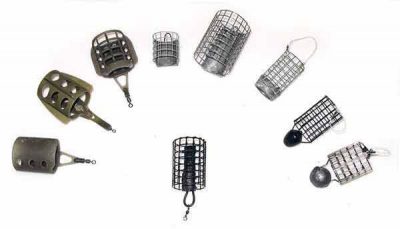
Metal feeder feeders are shaped like rectangular, triangular, cylindrical and semicircular (cut cylinder mounted on a flat base). They have several advantages. Firstly, such models sink to the bottom faster after casting, which is very important in those reservoirs full of small fish. The metal mesh seems to cut through the water column and in a few seconds ends up on the bottom surface, without having time to attract the attention of small fish, which, as a rule, stand in the middle horizon. Secondly, such a feeder better resists water flow. If you choose the right weight, it will reliably hold the equipment at one point without slipping or rolling along the bottom. And thirdly, strength. The metal body can withstand impacts from stones and other hard objects. Even if it bends slightly, you can straighten it with your hands and continue to catch it.
It’s not bad when the main weight of the feeder is concentrated on the opposite side of the mounting eye or swivel. This way it gently enters the water without creating a loud splash, which is very important when catching wary fish.
Metal cage feeders have one serious drawback. The fact is that they float up much heavier than plastic ones. Sometimes they have to be forcefully pulled through the algae growing at the bottom. Also, this disadvantage often comes into play when fishing on deep edges and drop-offs, when the feeder literally clings to the “step”.
Another negative quality of metal products is the appearance of rust in areas where the paint has peeled off. After long-term use, they have to be tinted with waterproof paint.
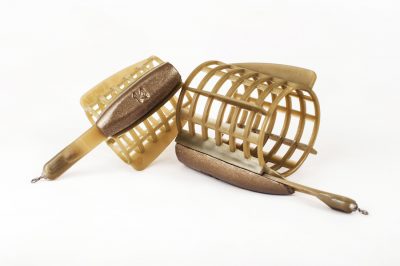
There are no such problems with plastic feeders. They do not corrode, float up well, avoid obstacles better, and almost never get stuck in bottom silt. Such products are well suited for fishing in stagnant lakes and river backwaters, as well as in those reservoirs where the bite can only be maintained through intensive feeding.
The wings that some models are equipped with give plastic feeders even greater buoyancy. In addition, this element increases the plane of the feeder, thereby preventing it from sinking into the silt. It must be said that wings can not only help in fishing, but also create certain inconveniences. They reduce stability. If the tackle is used on a river, after casting, the feeder carried away by the current will be away from the feeding point. That is why fishermen sometimes resort to extreme measures - cutting off the wings with a knife.
Onboard fishing rod for bream
This type of gear is characterized by its miniature size, light weight and ease of assembly. At the same time, the fishing rod must have high strength parameters and positive buoyancy, so as not to be irretrievably lost if it falls overboard.
Important! Carbon fiber options with a massive cork butt fit the base of the side most ideally.
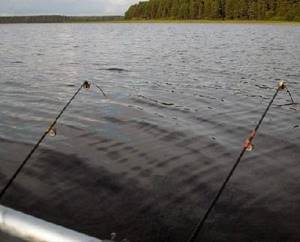
As a rule, tackle like winter spinning rods or their full analogs, no more than one and a half to two meters long, are used as a fishing rod. Blanks are preferable to soft action, with tests no higher than 30 grams. It is advisable to select reinforced guides with a large diameter, which will facilitate comfortable casting and prevent line tangles. Both solid versions and telescopic models of fishing rods are suitable for arranging tackle. The presence of a carbine on the butt of the tackle for insurance is welcome, since the pulling of the fishing rod by a pecked trophy, as well as the elementary dumping into the water during strong waves, is a fairly common phenomenon for this type of fishing, requiring measures to minimize them.
Design and equipment of the onboard fishing rod
The rigging scheme of an onboard fishing rod for bream does not differ much from a regular fishing rod, but it has certain nuances in the configuration of the tackle according to the parameters of some accessories, which makes fishing in cramped conditions on a boat and with constant roughness of the water surface more convenient. Next, we will look at some features of the design and equipment of the flange, based on the method of using fishing installation diagrams, focusing on the main elements of the gear.
Simple float rod
A reel is installed on the base to store fishing line, the volume of which is 20 meters is always sufficient under any fishing conditions. In some cases, and especially in a well-fed spot where the fish stays with enviable constancy, the reel can be eliminated from the design of the tackle by attaching an already known size cut of cord directly to the tip of the rod through a connector or directly. A 0.2 mm fishing line will ensure reliability when catching even a large specimen. Floats are used with a cone-shaped main body and a thin antenna with a bright boss of 10–15 cm. It is more practical to use a float with two points for blind fastening. The float mass range, depending on the strength of the wind and waves, is used in the range from 1 to 5 grams. The sinker is placed sliding, in the shape of an olive, in a single version. The leash is attached directly to the main fishing line, tightly tying the two bases. The leader material is made of monofilament of 0.12-0.16 mm, no more than 30 cm long. Depending on the nozzle, hooks are used in a color similar to it, using different lengths of the forend and focusing on selection in the ranges from 10 to 14 numbers.
Float rod with reel
This option differs from conventional float tackle in the installation of a reel. To a greater extent, the reel will serve as a storage line for the line, allowing you not to retie the main cord when changing the fishing point. For these purposes, lightweight plastic versions of inertial reels of small diameters, with a locking system and a ratchet, are selected. The rod is based on blanks up to two meters in length with guide rings. The principle of the rest of the installation is completely identical to the equipment of a conventional float described above. When assembling the tackle, it is worth considering that the excess weight of the reel and its ability to submerge under water can affect the overall buoyancy of the tackle, making it not a positive characteristic at all.
DIY feeder feeders
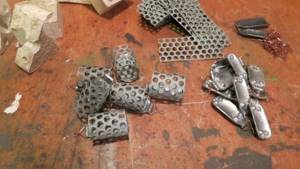
You can make a completely working feeder with your own hands from scrap materials. You just need to find a piece of metal mesh, wire with a diameter of 1 mm and a little lead. The mesh is given the desired shape and inserted with its ends into a square recess made in damp sand. An ear is bent from the wire and also inserted into the recess on one of its sides. Next you need to melt and pour the lead. When it cools down, you can pull the resulting feeder out of the sand and sand it down to remove protruding parts, sagging and other defects. It will catch no worse than a store-bought one.
From curlers
Look how easy it is to make a feeder from old Soviet curlers, the main thing is that your wife doesn’t see):

